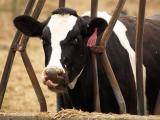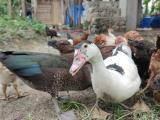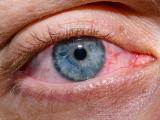Mar 11, 2009
Egyptian baby stable with H5N1 infection
The World Health Organization (WHO) today confirmed an H5N1 avian influenza case that Egypt's health ministry reported yesterday, in an 18-month-old girl from Menofia governorate. She got sick on Mar 6 after she had contact with dead and sick poultry, the WHO said. She was hospitalized on Mar 9 and remains in stable condition. The WHO's H5N1 count for Egypt has reached 58 cases, 23 of which were fatal. The global H5N1 total is 411 cases and 256 deaths.
[Mar 11 WHO statement]
Nepal, Egypt report H5N1 outbreaks
Veterinary officials in Nepal's Jhapa district culled about 260 poultry and destroyed eggs yesterday in response to another H5N1 outbreak, the country's news agency reported today, according to Xinhua, China's state news agency. The outbreak is Nepal's second since mid January. Meanwhile, Egypt reported two new H5N1 outbreaks in backyard birds, one in chickens and ducks in Alexandria governorate and the other in chickens in Beheira governorate, according to reports from the Egypt-based Strengthening Avian Influenza Detection and Response (SAIDR).
[Mar 11 Xinhua story]
Contradictory reports on Chinese live-bird markets
Contradictory reports have emerged from China regarding attempts to prevent the spread of avian influenza via live-bird markets. The news websites Shanghai Daily and Sina.com report that the Ministry of Agriculture plans to close any live bird or animal markets in medium or large cities, but the ministry denied the report in a story placed in the Beijing Times and the official news service Xinhua.
[March 10 Sina.com story (Mandarin)]
[March 10 Xinhua story]
Good results reported in trial of weakened smallpox vaccine
A weakened smallpox (vaccinia) vaccine grown in tissue culture triggered an immune response in most recipients in a Japanese trial, according to a report in the Journal of the American Medical Association (JAMA). The vaccine, called LC16m8, was used safely in thousands of Japanese infants in the 1970s. The new trial involved more than 3,200 Japanese military personnel. The vaccine induced a skin reaction in 94.4% of vaccinia-naive participants and triggered an antibody response in 90%. Among previously vaccinated volunteers, the vaccine elicited a skin reaction in 86.6% and an antibody response in 60%. No serious adverse events were reported.
[JAMA article]
NIH seeks stimulus grant applications
The National Institutes of Health (NIH) announced yesterday that it was accepting applications for $1.5 billion in grant money provided by the federal stimulus bill that was passed in February. The funds include $200 million in 2-year jump-start funding to address specific challenges in biomedical and behavioral research, $1 billion to improve existing research facilities, and $300 million to purchase critical research equipment.
[Mar 10 NIH press release]



















